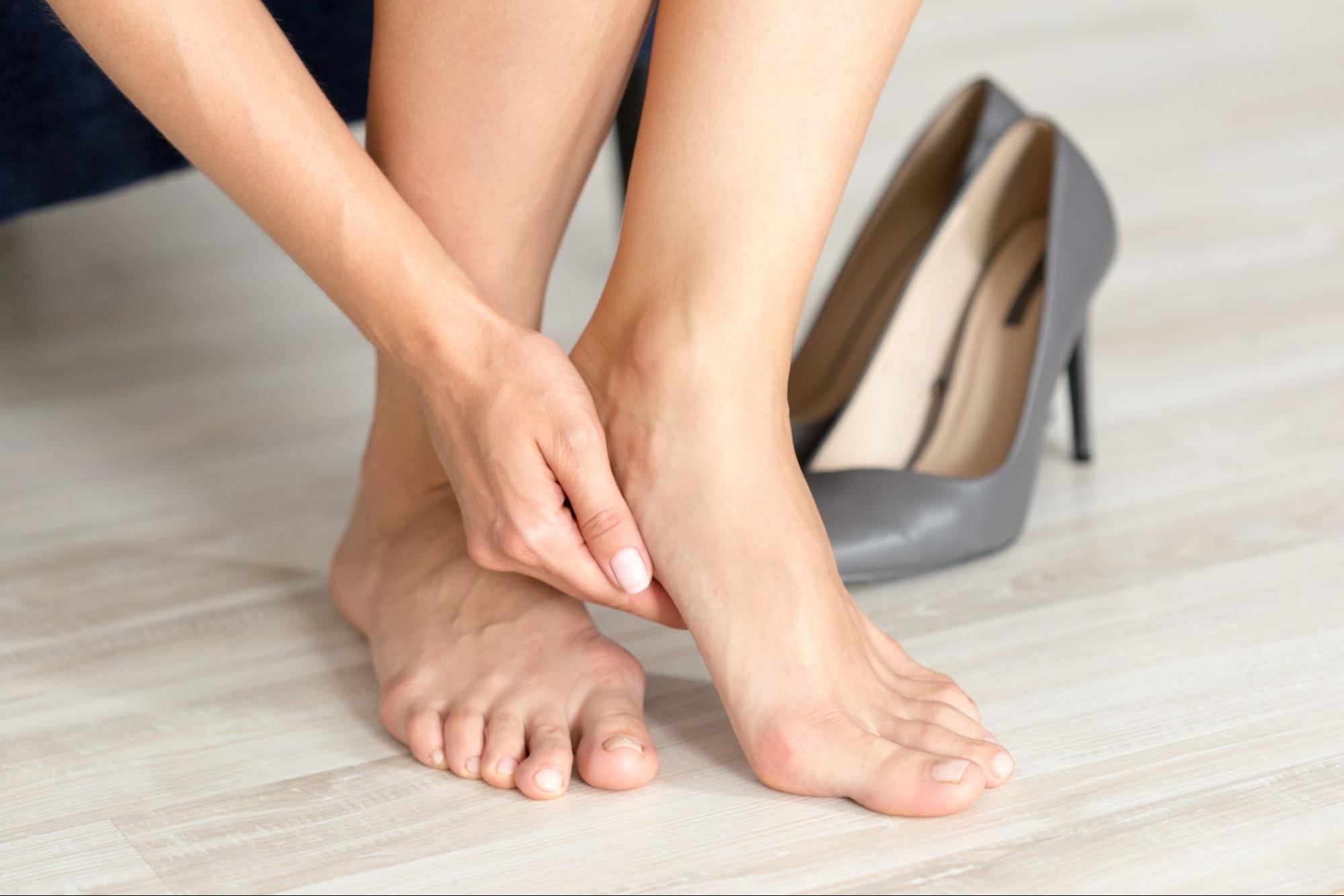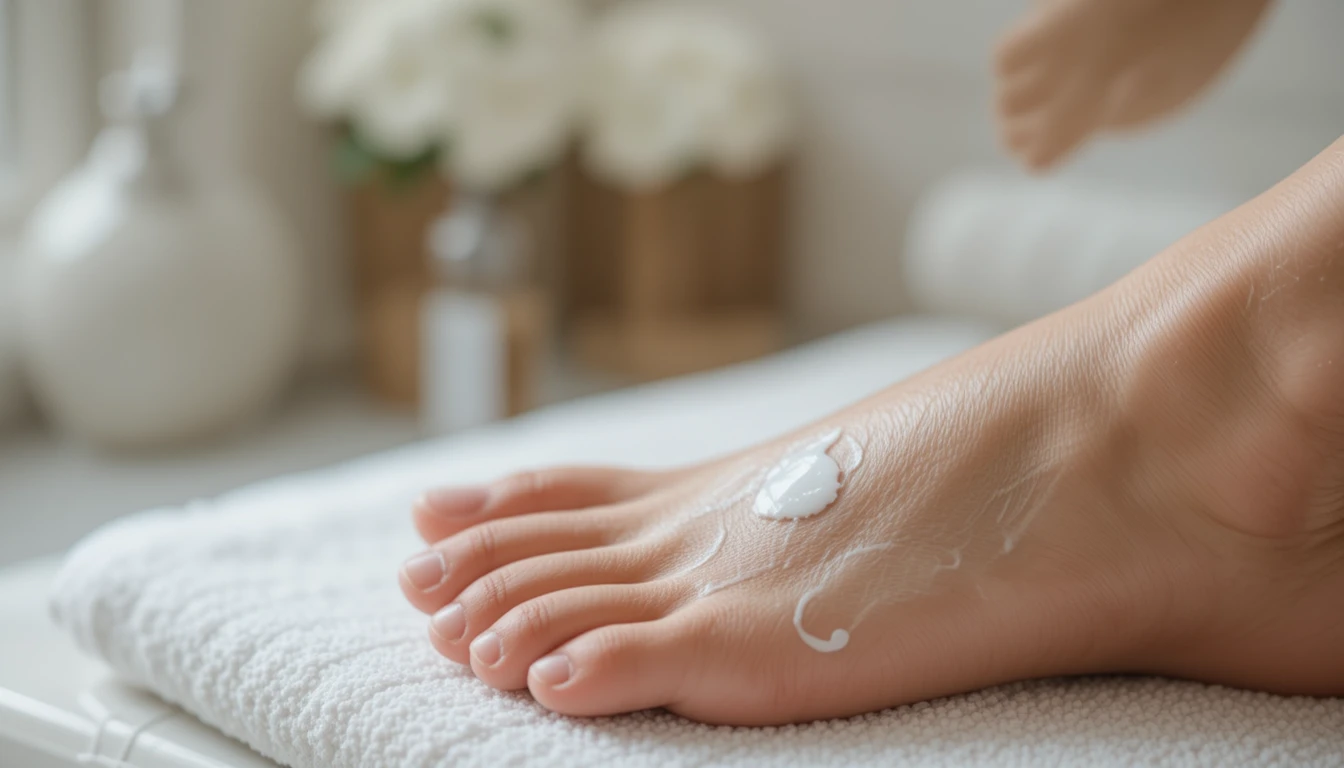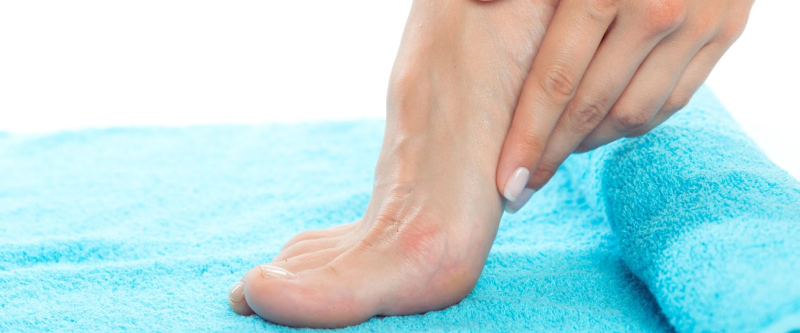If you’ve ever dealt with sore, sensitive, or overworked feet, you know just how uncomfortable even the smallest task can feel. From painful calluses to cracked heels or prepping for a cosmetic foot procedure, finding relief is often a priority. When walking hurts or your feet are simply too sensitive to touch, numbing cream can offer a much-needed break from the discomfort.
Numbing cream for feet is a topical solution designed to reduce pain and sensitivity by blocking nerve signals near the skin’s surface. It’s commonly used before pedicures, laser treatments, or to ease pain from minor skin issues, such as corns or pressure points.
With the right product and proper application, numbing cream can make everyday foot care and cosmetic treatments far more comfortable and manageable.
In this article, you’ll learn how numbing cream works on the feet, when to use it, the safest way to apply it, and which products offer the best results.
Numbing Cream for Feet: 8 Essential Uses & Safety Tips

Numbing cream is a topical drug designed to dull sensation in a specific area of the skin. It contains active ingredients like lidocaine or prilocaine, which help reduce pain by targeting nerve endings.
The feet often deal with constant pressure, dryness, or friction, making them prone to pain and sensitivity. Applying numbing cream before certain treatments or when dealing with specific skin issues can provide temporary comfort.
It’s suitable for minor pain, cosmetic procedures, and cases where even a light touch feels uncomfortable.
How Numbing Cream Works on Feet
Numbing creams work by interrupting the nerve signals that send pain messages to your brain. This is especially useful for the feet, where thick skin layers and regular movement can intensify minor pain.
Common active ingredients include:
- Lidocaine
- Prilocaine
These compounds are often found in foot pain relief creams sold in pharmacies and can be paired with supportive brands like Aspercreme or Dr. Scholl’s, depending on the type of discomfort. Most creams begin working within 15 to 30 minutes and offer numbness that can last up to 2 hours.
Common Reasons to Use Numbing Cream on Feet
Here are typical reasons people use numbing cream on their feet:
- Pain caused by corns, cracked heels, or calluses
- Before cosmetic procedures like laser hair removal or microneedling
- To reduce nerve pain from plantar fasciitis (under guidance)
- Before pedicures if your feet are highly sensitive or ticklish
It's also helpful for individuals with mild nerve pain or irritation from wearing heels all day, especially when paired with a cream that includes lidocaine spray or a cooling foot balm.
Best Types of Numbing Creams for Feet
There are many creams available, but not all are suitable for use on thick foot skin. Consider these:
Over-the-Counter Options
- Lidocaine 4-5% creams for general pain relief
- Popular options include EMLA, LMX4, or products sold by the Aspercreme Lidocaine spray line
- Some pharmacies, like CVS, also offer store-brand versions
Prescription Strength
- Higher-percentage creams for severe pain
- Only to be used under medical supervision
Look for fast absorption, deep penetration, and a formula safe for use on heel skin. Some also come in numbing spray format, which may be more convenient for quick use before slipping into shoes.
How to Apply Numbing Cream to Feet Safely

For the best results, apply numbing cream the right way:
- Wash and dry your feet thoroughly before use
- Apply a thin, even layer to the targeted area only
- Use a dressing (if allowed) to help the cream absorb
- Wait 20–30 minutes for it to activate
- Avoid using too much, especially on wide areas like soles or around toes
Do not apply near open cracks or raw skin. Some products labeled as relief cream or soothing gel may also help, but always check the instructions for specific foot application.
Safety Tips and Precautions
Foot skin can be tricky, it’s dry, thick, and prone to small breaks. Keep these safety tips in mind:
- Avoid using numbing cream on broken skin, ulcers, or infected spots
- Don't apply over large areas unless directed to do so by a doctor.
- Watch for signs of irritation, such as burning, redness, or a rash.
- Talk to a doctor before using if you have diabetes, circulation issues, or neuropathy
Even if you're just dealing with heel pain after a long day, it's important to check product suitability and test on a small spot first.
When Not to Use Numbing Cream on Feet
There are times when numbing cream is not the right solution. Avoid use if you have:
- Open wounds, ulcers, or deep heel fissures
- Severe infections or inflammation
- Allergies to ingredients like lidocaine or prilocaine
- Elderly or child users without medical advice
In some of these cases, switching to an antiseptic spray, gentle foot soak, or cooling foot gel may be safer and more effective.
Alternative Pain Relief for Foot Discomfort
If numbing cream isn’t a good fit, try these foot pain alternatives:
- Cold compresses or Epsom salt foot soaks
- Menthol-based creams that create a cooling effect
- Over-the-counter pain relievers like paracetamol
- Cushioned insoles or gel pads from brands like Dr. Scholl’s to reduce shoe pressure
These work well for daily fatigue or when you’re recovering from long hours in heels or tight footwear.
Conclusion
Numbing cream for feet can be a simple and effective way to manage pain during treatments or after daily strain. Whether you're easing nerve pain, preparing for a procedure, or recovering from wearing tight shoes, knowing how to use these creams correctly makes a significant difference.
Always follow application instructions, test for skin reactions, and never apply to broken or irritated skin. If you live with conditions like plantar fasciitis or diabetes, always consult a healthcare provider before use.
With clever use and the right cream, foot pain relief becomes easier, safer, and more comfortable even after the longest day in heels.
FAQs
Yes, especially if your feet are sensitive or prone to discomfort. Apply it 20–30 minutes before the session.
Only if the skin is intact and not bleeding or infected. Never apply to open wounds.
Most creams provide relief for 1 to 2 hours, depending on the formula and thickness of application.
Only under medical supervision. People with diabetes must be extra cautious with foot care.
Lidocaine 4–5% creams like LMX4 are popular for temporary pain relief on the feet.


